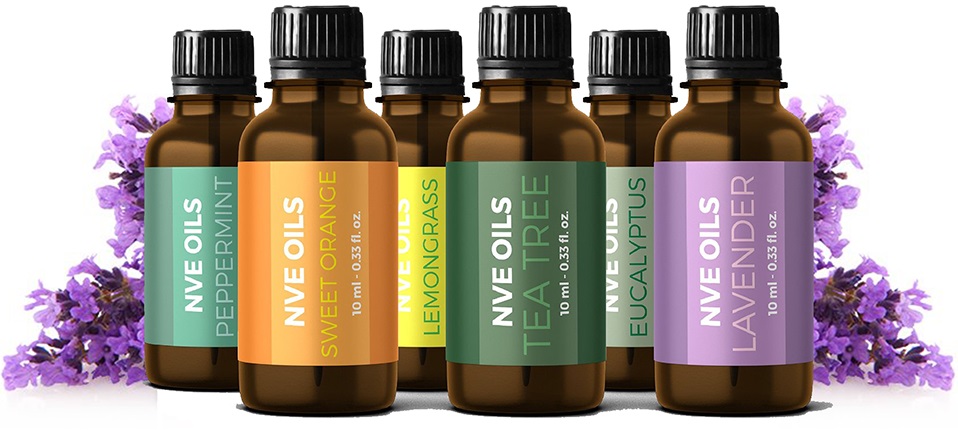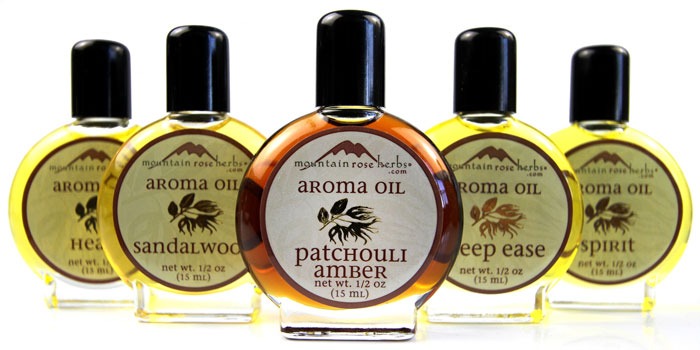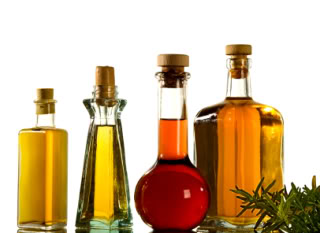



Top 10 Aroma Oils
(1) Oodh from Agarwood,
(2) Cistus species,
(3) Cedarwood oil,
(4) Mandarin,
(5) Neroli.
(6) Patchouli oil,
(7) Sandalwood oil,
(8) Vetiver oil,
(9) Ylang-ylang,
(10) Lemon oil.
Essential oils are volatile and liquid aroma compounds from natural sources, usually plants. Essential oils are not oils in a strict sense, but often share with oils a poor solubility in water. Essential oils often have an odor and are therefore used in food flavoring and perfumery. Essential oils are usually prepared by fragrance extraction techniques such as distillation (including steam distillation), cold pressing, or extraction (maceration). Essential oils are distinguished from aroma oils (essential oils and aroma compounds in an oily solvent), infusionsin a vegetable oil, absolutes, and concretes. Typically, essential oils are highly complex mixtures of often hundreds of individual aroma compounds.
• Agar oil or oodh, distilled from Agarwood (Aquilaria malaccensis). Highly prized for its fragrance.
• Ajwain oil, distilled from the leaves of Bishop's weed (Carum copticum). Oil contains 35–65% thymol.
• Angelica root oil, distilled from the Angelica archangelica.
• Anise oil, from the Pimpinella anisum, rich odor of licorice, used medicinally.
• Asafoetida, used medicinally and to flavor food.
• Balsam of Peru, from the Myroxylon, used in food and drink for flavoring, in perfumes and toiletries for fragrance, and in medicine and pharmaceutical items for healing properties.
• Basil oil is used in making perfumes, as well as in aromatherapy
• Bay oil is used in perfumery; Aromatherapeutic for sprains, colds, flu, insomnia, rheumatism.
• Bergamot oil, used in aromatherapy and in perfumes.
• Black Pepper essential oil is distilled from the berries of Piper nigrum. The warm, soothing effect makes it ideal for treating muscle aches, pains and strains and promoting healthy digestion.
• Buchu oil, made from the buchu shrub. Considered toxic and no longer widely used.[citation needed] Formerly used medicinally.
• Birch is aromatheapeutic for gout, Rheumatism, Eczema, Ulcers.
• Camphor is used for cold, cough, fever, rheumatism, and arthritis
• Cannabis flower essential oil, used as a flavoring in foods, primarily candy and beverages. Also used as a scent in perfumes, cosmetics, soaps, and candles.
• Caraway oil, used a flavoring in foods. Also used in mouthwashes, toothpastes, etc. as a flavoring agent.
• Cardamom seed oil, used in aromatherapy and other medicinal applications. Extracted from seeds of subspecies of Zingiberaceae(ginger). Also used as a fragrance in soaps, perfumes, etc.
• Carrot seed oil (essential oil), used in aromatherapy.
• Cedarwood oil, primarily used in perfumes and fragrances.
• Chamomile oil, There are many varieties of chamomile but only two are used in aromatherapy- Roman and German. Both have similar healing properties but German chamomile contains a higher level of azulin (an anti-inflammatory agent).
• Calamus Root, used medicinally
• Cinnamon oil, used for flavoring and medicinally.
• Cistus species
• Citron
• Citronella oil, from a plant related to lemon grass is used as an insect repellent, as well as medicinally.
• Clary Sage
• Clove leaf oil, used as a topical anesthetic to relieve dental pain.
• Coffee, used to flavor food.
• Coriander
• Costmary oil (bible leaf oil), from the Tanacetum balsamita
• Costus Root, used medicinally
• Cranberry seed oil, equally high in omega-3 omega-6 fatty acids, primarily used in the cosmetic industry.
• Cubeb, used medicinally and to flavor foods.
• Cumin oil/Black seed oil, used as a flavor, particularly in meat products. Also used in veterinary medicine.
• Cypress
• Cypriol
• Curry leaf, used medicinally and to flavor food.
• Davana oil, from the Artemisia pallens, used as a perfume ingredient and as a germicide.
• Dill oil, chemically almost identical to caraway seed oil. High carvone content.
• Elecampane, used medicinally.
• Eucalyptus oil, historically used as a germicide. Commonly used in cough medicine, among other medicinal uses.
• Fennel seed oil, used medicinally, particularly for treating colic in infants.
• Fenugreek oil, used medicinally and for cosmetics from ancient times.
• Fir
• Frankincense oil, used for aromatherapy and in perfumes.
• Galangal, used medicinally and to flavor food.
• Galbanum
• Geranium oil, used medicinally, particularly in aromatherapy, used for hormonal imbalance, for this reason geranium is often considered to be "female" oil.
• Ginger oil, used medicinally in many cultures.
• Goldenrod
• Grapefruit oil, extracted from the peel of the fruit. Used in aromatherapy. Contains 90% limonene.
• Henna oil, used medicinally.
• Helichrysum
• Hickory nut oil
• Horseradish oil
• Hyssop
• Idaho Tansy
• Jasmine oil, used for its flowery fragrance.
• Juniper berry oil, used as a flavor. Also used medicinally, including traditional medicine.
• Laurus nobilis
• Lavender oil, used primarily as a fragrance. Also used medicinally.
• Ledum
• Lemon oil, similar in fragrance to the fruit. Unlike other essential oils, lemon oil is usually cold pressed. Used medicinally, as an antiseptic, and in cosmetics.
• Lemongrass is a highy fragrant grass from India. In India, it is used to help treat fevers and infections. The oil is very useful for insect repellent.
• Lime, anti septic, anti viral, astringent, aperitif, bactericidal, disinfectant, febrifuge, haemostatic, restorative and tonic.
• Litsea cubeba oil, lemon-like scent, often used in perfumes and aromatherapy.
• Linaloe
• Mandarin
• Marjoram
• Melaleuca See Tea tree oil
• Melissa oil (Lemon balm), sweet smelling oil used primarily medicinally, particularly in aromatherapy.
• Mentha arvensis oil/Mint oil, used in flavoring toothpastes, mouthwashes and pharmaceuticals, as well as in aromatherapy and other medicinal applications.
• Moringa oil, can be used directly on the skin and hair. It can also be used in soap and as a base for other cosmetics.
• Mountain Savory
• Mugwort oil, used in ancient times for medicinal and magical purposes. Currently considered to be a neurotoxin.
• Mustard oil (essential oil), containing a high percentage of allyl isothiocyanate or other isothiocyanates, depending on the species of mustard
• Myrrh oil, warm, slightly musty smell. Used medicinally.
• Myrtle
• Neem oil or Neem Tree Oil
• Neroli is produced from the blossom of the bitter orange tree.
• Nutmeg
• Orange oil, like lemon oil, cold pressed rather than distilled. Consists of 90% d-Limonene. Used as a fragrance, in cleaning products and in flavoring foods.
• Oregano oil, contains thymol and carvacrol, making it a useful fungicide. Also used to treat digestive problems.
• Orris oil is extracted from the roots of the Florentine iris (Iris florentina) and used as a flavouring agent, in perfume, and medicinally.
• Palo Santo
• Parsley oil, used in soaps, detergents, colognes, cosmetics and perfumes, especially men's fragrances.
• Patchouli oil, very common ingredient in perfumes.
• Perilla essential oil, extracted from the leaves of the perilla plant. Contains about 50–60% perillaldehyde.
• Pennyroyal oil, highly toxic. It is abortifacient and can even in small quantities cause acute liver and lung damage.
• Peppermint oil, used in a wide variety of medicinal applications.
• Petitgrain
• Pine oil, used as a disinfectant, and in aromatherapy.
• Ravensara
• Red Cedar
• Roman Chamomile
• Rose oil, distilled from rose petals, Used primarily as a fragrance.
• Rosehip oil, distilled from the seeds of the Rosa rubiginosa or Rosa mosqueta. Used medicinally.
• Rosemary oil, distilled from the flowers of Rosmarinus officinalis. Used in aromatherapy, topically to sooth muscles, and medicinal for its antibacterial and antifungal properties.
• Rosewood oil, used primarily for skin care applications. Also used medicinally.
• Sage oil, used medicinally.
• Sandalwood oil, used primarily as a fragrance, for its pleasant, woody fragrance.
• Sassafras oil, from sassafras root bark. Used in aromatherapy, soap-making, perfumes, and the like. Formerly used as a spice, and as the primary flavoring of root beer, inter alia.
• Savory oil, from Satureja species. Used in aromatherapy, cosmetic and soap-making applications.
• Schisandra oil, from Schisandra chinensis, used medicinally.
• Spearmint oil, often used in flavoring mouthwash and chewing gum, among other applications.
• Spikenard, used medicinally.
• Spruce has calming and elevating properties. It can be used as a topical application for muscular aches and pains, poor circulation, and rheumatism. Spruce Oil has also been used to improve breathing conditions of asthma, bronchitis, coughs, and general weakness.
• Star anise oil, highly fragrant oil using in cooking. Also used in perfumery and soaps, has been used in toothpastes, mouthwashes, and skin creams.[9] 90% of the world's star anise crop is used in the manufacture of Tamiflu, a drug used to treat influenza, and is hoped to be useful for avian flu
• Tangerine
• Tarragon oil, distilled from Artemisia dracunculus, used medicinally.
• Tea tree oil, extracted from Melaleuca alternifolia; promoted for medicinal use, but with limited evidence of effectiveness.
• Thyme oil, used medicinally.
• Tsuga belongs to the pine tree family. It is used as analgesic, antirheumatic, blood cleanser, and stimulant. It treats cough, respiratory conditions, kidney ailments, urinary infections.
• Turmeric, used medicinally and to flavor food
• Valerian is used for insomnia, migraines, nervous dyspepsia, and dandruff.
• Vetiver oil (khus oil) a thick, amber oil, primarily from India. Used as a fixative in perfumery, and in aromatherapy
• Western red cedar
• Wintergreen can be used as an analgesic, anodyne, anti rheumatic & anti arthritic, anti spasmodic, anti septic, aromatic, astringent, carminative, diuretic, emenagogue and stimulant
• Yarrow oil is used medicinally, to relieve joint pain
• Ylang-ylang is used for calming, antiseptic, and aphrodisiac purposes, as well as hypertension and skin diseases.
• Zedoary, used medicinally and to flavor food.



Source : Mihir, perfume lounge
All other trademarks displayed on this webpage are the trademarks of their respective owners, and constitute neither an endorsement nor a recommendation of those Vendors. In addition, such use of trademarks or links to the web sites of Vendors is not intended to imply, directly or indirectly, that those Vendors endorse or have any affiliation with us. Furthermore, name trademarks and copyrights included on this site, are properties of their respective manufacturers and/or designers. Takeit2day.com has no affiliation with the manufacturers/designers. It is not intended to infringe on the manufacturers/designer's name and valuable trademark. Any references to brand names are made strictly for comparison only. Also, let it be known, that this web site has no affiliation to, and is not associated or sponsored by any of these trademark owners.
| Name | |
| Phone | |